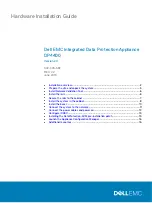
Figure. 5.4.10. - 115. Per unitized system voltage and magnitude of the 5
th
harmonic component, absolute and scaled to
transformer nominal.
As can be seen in the gure above the 5
th
harmonic component increases, decreases and then
increases again in the function of rising system voltage, in this case about with overvoltage of 160%
the 5
th
harmonic seems to disappear completely. In this kind of behavior the previously mentioned
blocking behavior can be used, it automatically blocks with smaller overvoltage (in order if there is any
differential current) and releases if the overvoltage is too heavy when the differential current most
probably is over the tripping limit.
However the behavior of the blocking is very unpredictable if the exact saturation characteristic of the
transformer is not known and (this cannot be estimated without knowing the exact design of the
transformer) if there is chance that the over excitation can cause problems (in practice this means that
there is no overvoltage relay available) this blocking can be enabled with setting of 30-40% with
disturbance recorder enabled. If there should happen anything related to tripping due to over
excitation, settings may be adjusted based into the data captured by disturbance recorder.
AQ-T216
Instruction manual
Version: 2.00
153
© Arcteq Relays Ltd














































